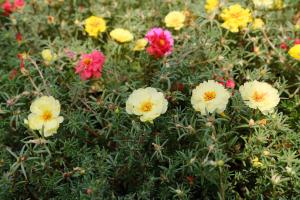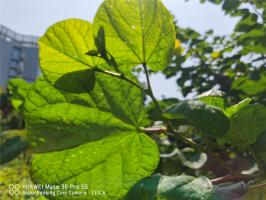Possible Causes for Your Plant Turning Black
Are you concerned about your plant turning black and unsure what could be causing it? There can be several reasons why your plant is turning black, and identifying the problem is the first step in finding a solution to revive your plant. Here are some possible causes for your plant turning black:
1. Overwatering
Overwatering can cause the roots to suffocate, leading to fungal growth that can turn the plant black. Too much water can also cause the plant to become waterlogged, which can prevent it from absorbing nutrients, leading to root rot and the eventual blackening of the plant.
To avoid overwatering, make sure the soil is well-drained and only water when the soil is dry to the touch. You can also consider using a pot with drainage holes or placing a layer of gravel at the bottom of the pot to improve drainage.
2. Fungal Infections
Fungal infections can occur due to poor air circulation, high humidity, or excessive moisture. Symptoms of fungal infection can include black spots, powdery mildew, or dark discoloration of the plant.
To prevent fungal infections, make sure the plant has adequate air circulation, avoid overhead watering, and use a fungicide if necessary. It is also important to remove any infected leaves or stems to prevent the spread of the infection.
3. Pest Infestations
Pests such as spider mites, aphids, thrips, or scale insects can damage the plant, leading to browning or blackening of the leaves. Pests can also transmit diseases that can turn the plant black.
To prevent pests, keep the plant clean and dust-free, and remove any dead or damaged leaves. You can also use insecticidal soap or neem oil to control pests.
What You Can Do to Revive Your Plant
Reviving a blackened plant will depend on the severity of the problem and the type of plant. In some cases, you may need to remove the affected part of the plant, while in other cases, you may need to repot the entire plant. Here are some general tips to revive your plant:
Stop watering the plant until the soil is dry.
Remove any dead or diseased parts of the plant.
Change the potting mix or repot the entire plant.
Provide adequate sunlight and air circulation.
Use fertilizers to promote growth.
If the problem persists, consider consulting a plant expert or horticulturist.
By taking the necessary steps to identify the problem and revive your plant, you can enjoy a healthy and thriving plant for years to come.

 how many times do yo...
how many times do yo... how many planted tre...
how many planted tre... how many pine trees ...
how many pine trees ... how many pecan trees...
how many pecan trees... how many plants comp...
how many plants comp... how many plants can ...
how many plants can ... how many plants and ...
how many plants and ... how many pepper plan...
how many pepper plan...
































